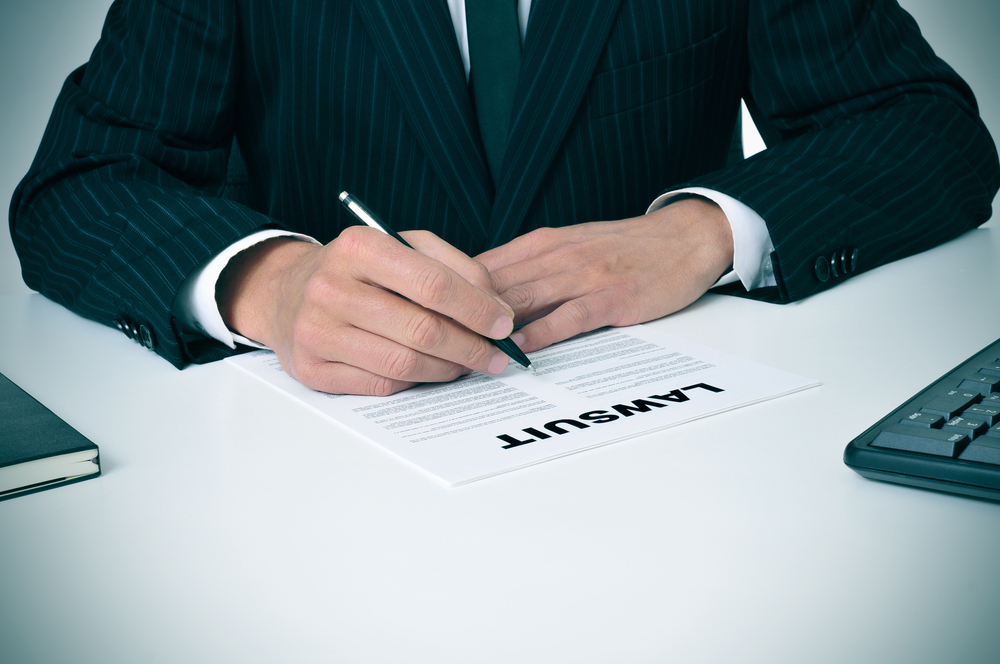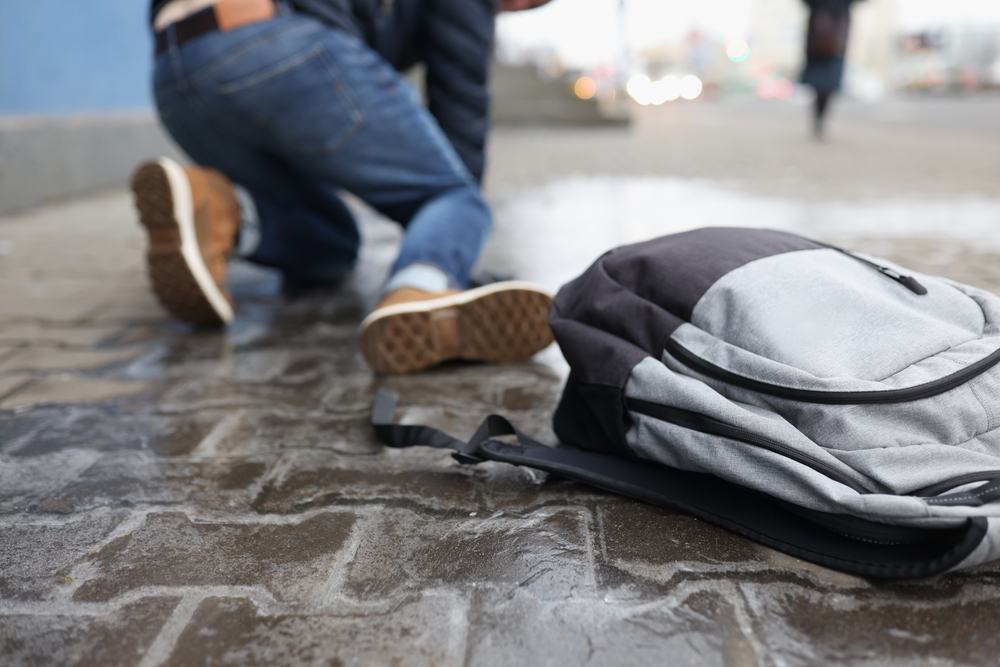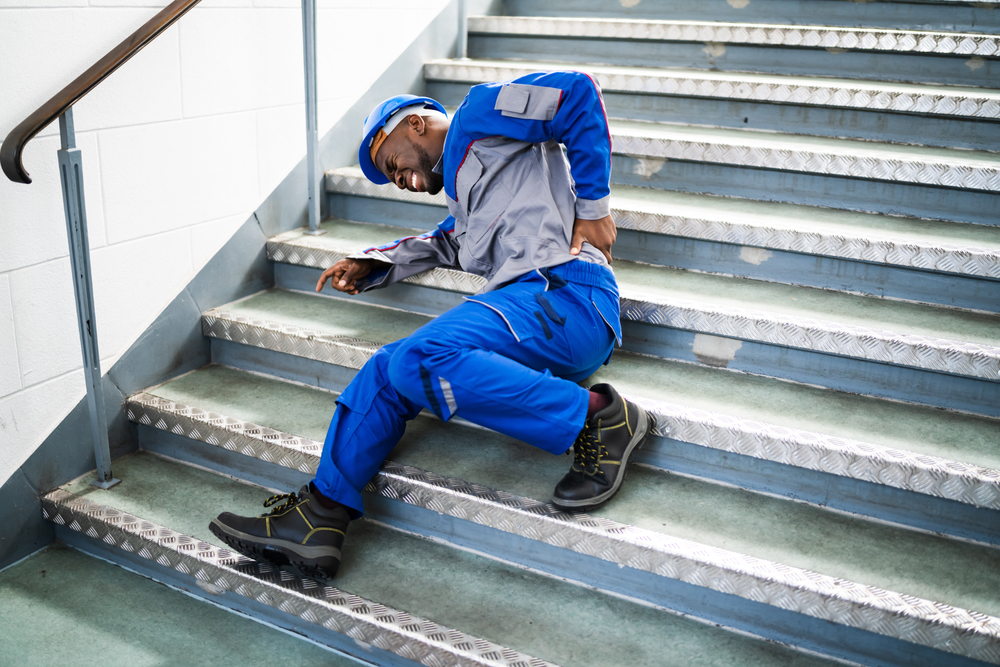How to Sue for a Slip and Fall
Most people go about their days without expecting to encounter unsafe conditions, but accidents still happen. If you’ve been injured in a slip-and-fall accident, you may be wondering how to sue for a slip and fall. An experienced Slip and Fall Injury Attorney can help you navigate the process and get the financial compensation you deserve.

Consult an Attorney
Once you’ve received medical attention for your slip and fall accident, documented the scene of the accident, and collected witness contact information, you’ll want to contact an attorney for consultation. An attorney who has experience with slip-and-fall cases will be able to help you figure out the best way forward to protect your rights, get justice, and secure any financial compensation that you’re entitled to.
Read the rest of this entry »How Long Do You Have to Report a Slip and Fall?
The bustling sidewalks and treacherous stairways of New York City can turn a casual stroll into an unexpected moment of pain. A misstep on a slick floor, a hidden pothole disguised by puddles, and suddenly, life gets a lot harder. How long do you have to report a slip and fall? The answer depends on where the accident happened.

Reporting a Slip and Fall in Queens, NY
To start, you need an understanding of the concept of the statute of limitations. This legal term lays out the timeframe within which you must initiate legal action against the party responsible for your injuries. Failure to file a claim within this allotted period effectively bars you from seeking compensation in court.
Read the rest of this entry »Who is Liable in a Slip and Fall Accident?
Falls are a leading cause of accidental injury in the United States and are responsible for millions of trips to the emergency room every year. While the news is full of stories about people getting six-figure settlements after slipping in a public place, not everyone can expect a huge payout when they fall on someone else’s property. Who is liable in a slip and fall accident? The answer is more complicated than you might think. Our slip and fall attorneys in Queens, NY have answers for you below:

Slip and Fall Accident Liability in New York
The person who owns or controls a piece of property has some legal responsibility for incidents that occur there. This is known as “premises liability.” However, this does not mean that the landowner or occupant can be sued for anything that happens on the premises. Under New York State law, the owner is merely obligated to keep the property in “reasonably safe condition” but is not the “insurer” of safety for all visitors. For example, if a customer knocks someone down in a grocery store, the owner is typically not liable for that fall.
Read the rest of this entry »On Behalf of Surdez & Perez P.C.
New York City’s elevated subway system has produced dangerous conditions and accidents caused by falling debris. City officials have not found a way to effectively contain broken fragments from more than 60 miles of elevated tracks.
As reported by CBS2 News, NYC Metropolitan Transportation Authority workers check the tracks regularly to discover potential problems. The awareness of the hazardous issue, however, means that the MTA has a duty of care to prevent further injuries.
Hazardous settings must present clear warnings to prevent injuries
When a hazardous elevated subway condition is present, officials must provide residents and visitors with reasonable warning signs to help them avoid it. Visible orange cones directing traffic around a potentially dangerous area may fulfill a duty of care.
Even though officials have placed nets underneath elevated tracks to catch falling debris, residents still incur damage from falling track fragments. If a resident sustains an injury from a falling object, the city can find itself liable for damages.
Injured NYC resident receives $110 million jury award
A 26-year-old NYC resident severely injured by a 10-foot railroad tie that fell on him filed a legal action for damages. While riding his bicycle underneath an elevated subway track, the falling railroad tie struck his spinal cord and left him paralyzed below the waist.
A construction worker waved the bicyclist through to pass, but the area did not have a barricade to prevent the cyclist from entering the falling-debris zone. As reported by WCBS 880 Radio, a jury awarded $110 million in damages for the resulting injuries.
The jury found the city liable for the construction worker’s negligence in allowing the bicyclist to pass without a safety barricade in place. The young man’s devastating bodily injuries will require him to use a wheelchair for the rest of his life. The jury based the award on the amount of lifelong care he will require, with about half of the total amount reflecting compensation for pain and suffering.
Filing a legal action may provide relief when local government fails to take the proper steps to protect pedestrians, motorists and cyclists. If you’re in an accident, contact us.
The risk of brain injuries on construction sites
On Behalf of Surdez & Perez P.C.
New York construction sites host an array of dangers. As construction workers, you face these dangers every time you clock in. Some of these risks have the potential to lead to brain injuries.
Today we will look at traumatic brain injuries. We will see how these injuries impact workers. Unfortunately, these injuries can impact workers for a long time to come.
A look at what TBIs are
Traumatic brain injuries (TBIs) are injuries to the head that results in damage. Even within this category, some cases have a higher severity than others. For example, some people with TBIs suffer from such immense damage that they must learn how to walk or eat again. Others have permanent nerve or sensory damage. These people may go blind or lose their hearing or smell. They may suffer from chronic pain. Many victims also have memory issues. Short term or long term memory damage is not uncommon.
Life after a TBI
So what happens when these people have a TBI? Rest and recuperation are important points. To recover, you may want to look into physical and mental therapy. But this takes time. For many construction workers, it is not possible to take weeks or even months off of work. In this case, this is where seeking worker’s compensation comes into play.
Do you want to continue reading about construction site injuries and accidents? If so, take a look at our linked web page here. You can learn more about how TBIs tie in to the construction industry. You can also look at the way these injuries impact a worker’s life and livelihood.
On Behalf of Surdez & Perez P.C.
There is no doubt that construction is one of the more dangerous industries, but workers should educate themselves on common illnesses as well as being familiar with the potential for injuries. Sometimes, an illness can creep up on you, which is not always the case with injuries.
eSUB, a creator of construction software, breaks down several illnesses prevalent in the construction business sector. Understand both visible and invisible risks that you face as a construction worker.
Lung cancer
Some breathing conditions on construction sites are downright dangerous. Without proper protection or knowledge of such conditions, workers could contract lung cancer. Another factor contributing to lung cancer in construction is the fact that many construction workers smoke cigarettes.
Asbestos-related illness
Related to lung cancer, asbestos-related illnesses are also common in construction. Asbestos present in buildings can come loose during renovation, and workers without proper protection may breathe in particles. In the lungs, asbestos can cause scarring and swelling, either of which can make it hard for a person to breathe. The building material also has a history of causing cancer.
Silicosis
One of the most dangerous things about silicosis, a lung disease, is that it can take several years to develop. Chronic cough and trouble breathing are two symptoms of the occupational illness caused by silica exposure. Silica is a building material found in bricks, granite and marble.
Occupational asthma
Sometimes, construction workers become regularly exposed to dangerous substances. Should that happen, they can develop occupational asthma. Future exposure to a particular substance often triggers attacks, making it difficult for affected workers to perform their jobs.
On Behalf of Surdez & Perez P.C.
New York employers have to provide a safe and healthy work environment for you and your fellow employees. This is especially important due to the increased risk to your safety inherent to the construction trade.
The Occupational Safety and Health Administration states that falls from heights cause the most construction fatalities. Besides the existing standards for construction industries, OSHA is making an extra effort to prevent deaths from falls.
What is OSHA doing to protect construction workers?
OSHA, along with several other government oversight agencies, implemented the Fall Prevention Campaign. The campaign goals are to help employers and employees recognize the hazards and learn to prevent them with three simple actions:
- PLAN: Determine the tasks, necessary safety equipment, and cost to get the job done
- PROVIDE: Supply and maintain proper scaffolds, ladders and fall protection equipment
- TRAIN: Teach workers to identify hazards, when to wear fall protection and how to use and care for it correctly
OSHA believes that with proper safety precautions, deaths from falls are preventable.
What are my employer’s responsibilities in the Fall Prevention Campaign?
OSHA guidelines require your construction employer to first identify any potential fall hazards on the job site. For example, you might slip off of narrow formwork or slide down a steep roof. Any unprotected edge or walkway presents a risk, as does a walking surface with holes.
Your employer must also ensure that all walking and working surfaces are sturdy enough to support workers’ weight. If your working area is six feet or more above a lower level, or if you are working over dangerous chemicals or open machinery, your employer must provide adequate fall protection. This includes safety nets, guardrails and personal fall arrest systems. Furthermore, your employer must make sure all equipment and gear are in good working order and train you in its proper use.
Pedestrian accidents are on the rise
On Behalf of Surdez & Perez P.C.
If you regularly walk or jog, you have probably had at least one close encounter with a motor vehicle. While you can take steps to keep yourself safe, you may not avoid a serious accident forever. Even worse, because cars, trucks and SUVs outweigh you by thousands of pounds, you may sustain life-altering injuries in a pedestrian-vehicle collision.
A recent study has some alarming news for pedestrians: The number of pedestrian accidents in the United States is at a 28-year high. Even worse, the mortality rate for walkers is higher than it has been since 1990. While pedestrian accidents occur for a variety of reasons, some causes are more common than others. Here are three of them:
1. Modern distractions
Even though legislators in New York and other places have cracked down on distracted driving, it remains a problem across the country. If a driver is not paying attention to the road, he or she may collide with a pedestrian. When sending text messages, responding to e-mails or making phone calls, pedestrians may inadvertently end up in dangerous situations. Either way, modern distractions are not good for pedestrian safety.
2. Inadequate walkways
Most of New York City is a walker’s paradise, with a nice network of sidewalks, bridges and trails. Unfortunately, though, not every place is safe for pedestrians. If a walker’s route takes him or her through a dangerous area, a catastrophic accident may be imminent.
3. Obstructed views
To boost their odds of avoiding a pedestrian accident, drivers must have a clear view of the areas around their vehicles. Still, weather conditions, traffic congestion, sun glare and other things can obstruct a driver’s vision. If a driver has obstructed views, he or she may not see a pedestrian until it is too late to avoid a collision.
While pedestrian accidents are on the rise, you do not have to leave your personal safety to chance. By understanding why pedestrian accidents tend to occur, you can take steps to prevent one. If you do sustain a serious injury in a collision with a motor vehicle, however, understanding why the accident occurred may be critical for receiving fair compensation for your damages.
How much does hands-free tech really help?
On Behalf of Surdez & Perez P.C.
Residents in New York may have heard of hands-free technology. This technology promises to keep drivers safe when using phones or GPS navigation systems. While some swear by it, other studies show it is not as helpful as manufacturers want to make you think.
Hands-free technology may reduce some risk factors associated with distracted driving. Unfortunately, it cannot fix every risk factor. There are three components that make up safe driving. These are:
- Having your mind on your driving
- Keeping your eyes on the road
- Keeping your hands on the wheel
If even one of these components is lacking, you cannot be a safe driver. Hands-free technology only addresses two of these aspects. With hands-free technology, you keep your hands on the wheel. Voice activated commands, bluetooth technology and speaker systems also help. They allow you to keep your eyes on the road, as your hands-free tech reads messages and directions to you.
But not even hands-free tech keeps your mind on the road. This is one of the biggest factors that impact potential crashes. Studies show that drivers become very distracted while holding conversations. This increased level of distraction lasts up to fifteen minutes after the conversation ends. Unfortunately, paying attention to hands-free tech opens you up to mental distraction.
If you wish to continue reading about crashes related to in-car technology, take a look at our linked web page. You can read more about common sources of car crashes. You can also read about how to use tactics on the road that improves your safety on a whole.
Reviewing examples of aggressive driving
On Behalf of Surdez & Perez P.C.
On the road, there are many different reasons why auto collisions continue to take place. However, aggressive behavior accounts for a lot of these crashes and drivers who place lives in danger by behaving aggressively cannot get away with their actions. Sadly, many lives are claimed and even more people sustain injuries in these wrecks. In this post, we will review various examples of aggressive driving and draw attention to the importance of taking action following a wreck.
Speeding, road rage and improper passing
According to the Arizona Department of Public Safety, there are many different ways in which aggressive driving occurs. Some drivers go too fast, not only increasing the odds of an accident but the likelihood of a devastating outcome when they collide with another vehicle. Moreover, aggressive drivers often pass improperly, whether they do not use signals or they try to pass in the wrong area (such as the shoulder of the road or an emergency lane). Furthermore, road rage increases the odds of an accident in many ways and some people regularly become aggressive behind the wheel.
Recovering from a collision
For victims of accidents caused by aggressive driving, many hardships are often present. Physical pain, immobilization, financial hardships and mental trauma are common among motor vehicle wreck victims. As a result, the recovery process requires a careful approach. Aside from seeking medical treatment and focusing on one’s physical well-being, it is pivotal for the victims of these wrecks to explore their legal options. On our website, we discuss other topics related to holding reckless drivers responsible for their actions.


